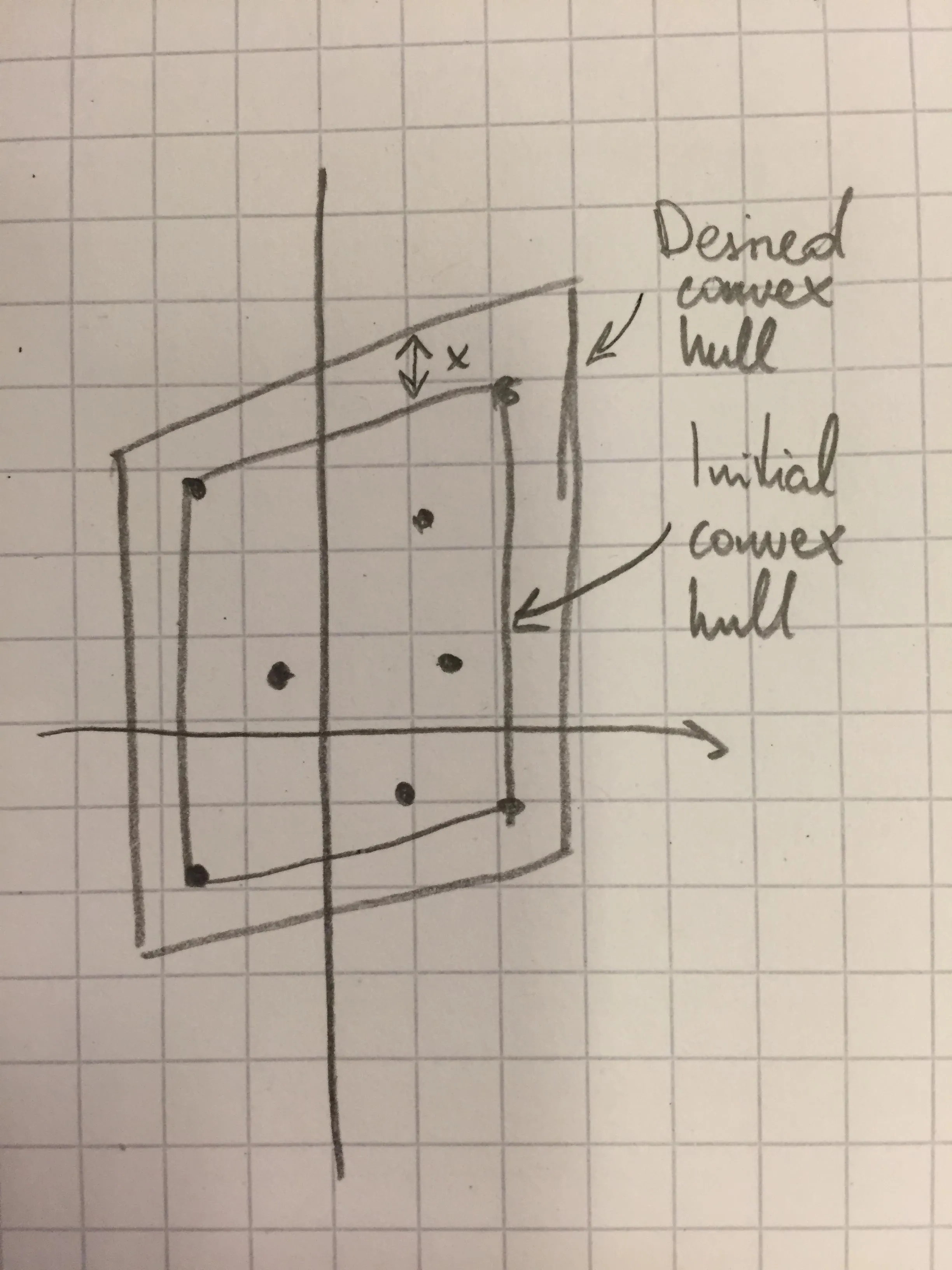2个回答
5
from scipy.spatial import ConvexHull
import matplotlib.pyplot as plt
import numpy as np
import math
def PointsInCircum(eachPoint,r,n=100):
return [(eachPoint[0] + math.cos(2*math.pi/n*x)*r,eachPoint[1] + math.sin(2*math.pi/n*x)*r) for x in range(0,n+1)]
def bufferPoints (inPoints, stretchCoef, n):
newPoints = []
for eachPoint in inPoints:
newPoints += PointsInCircum(eachPoint, stretchCoef, n)
newPoints = np.array(newPoints)
newBuffer = ConvexHull (newPoints)
return newPoints[newBuffer.vertices]
if __name__ == '__main__':
points = np.array([[-2,3], [2,4], [-2,-2], [2,-1], [1,-1], [-0.5, 0.5]])
plt.scatter(points[:,0], points[:,1])
plt.show()
convh = ConvexHull(points)#Get the first convexHull (speeds up the next process)
stretchCoef = 1.2
pointsStretched = bufferPoints (points[convh.vertices], stretchCoef, n=10)
plt.scatter(points[:,0], points[:,1])
plt.scatter(pointsStretched[:,0], pointsStretched[:,1], color='r')
plt.show()
所以我更新了上面的代码。它围绕第一组ConvexHull顶点创建一个点圆,并创建一个新的ConvexHull。
这是该代码的输出绘图视图
- danwintsch
3
以下是一种解决您纸上问题的想法:
from scipy.spatial import ConvexHull
import matplotlib.pyplot as plt
import numpy as np
if __name__ == '__main__':
points = np.array([[-2,3], [2,4], [-2,-2], [2,-1], [1,-1], [-0.5, 0.5]])
plt.scatter(points[:,0], points[:,1])
plt.show()
convh = ConvexHull(points)
stretchCoef = 1.2
pointsStretched = points[convh.vertices]*stretchCoef
plt.scatter(points[:,0], points[:,1])
plt.scatter(pointsStretched[:,0], pointsStretched[:,1], color='r')
plt.show()
pointsStretched会为您的新凸包找到新的点。 使用拉伸系数在这里起作用,因为您在凸包的每个顶点上都有不同象限的点,但我认为您已经知道如何解决这个问题了。一种方法是在拉伸后的凸包中找到点,这些点沿着与初始点相同的向量。
- Dennis C Furlaneto
2
2这是一个不错的解决方案。但它也会将距离原点较远的点/边界相对地向外移动更远。从图中看,似乎需要一个等距缓冲区。当然,多边形的确切缓冲区通常不再是一个多边形。 - dhke
非常正确dhke,感谢您指出这一点。为了解决这个问题,可以更改此算法以计算每个点的不同缩放系数,其中计算以边框的大小作为输入。 - Dennis C Furlaneto
网页内容由stack overflow 提供, 点击上面的可以查看英文原文,
原文链接
原文链接
